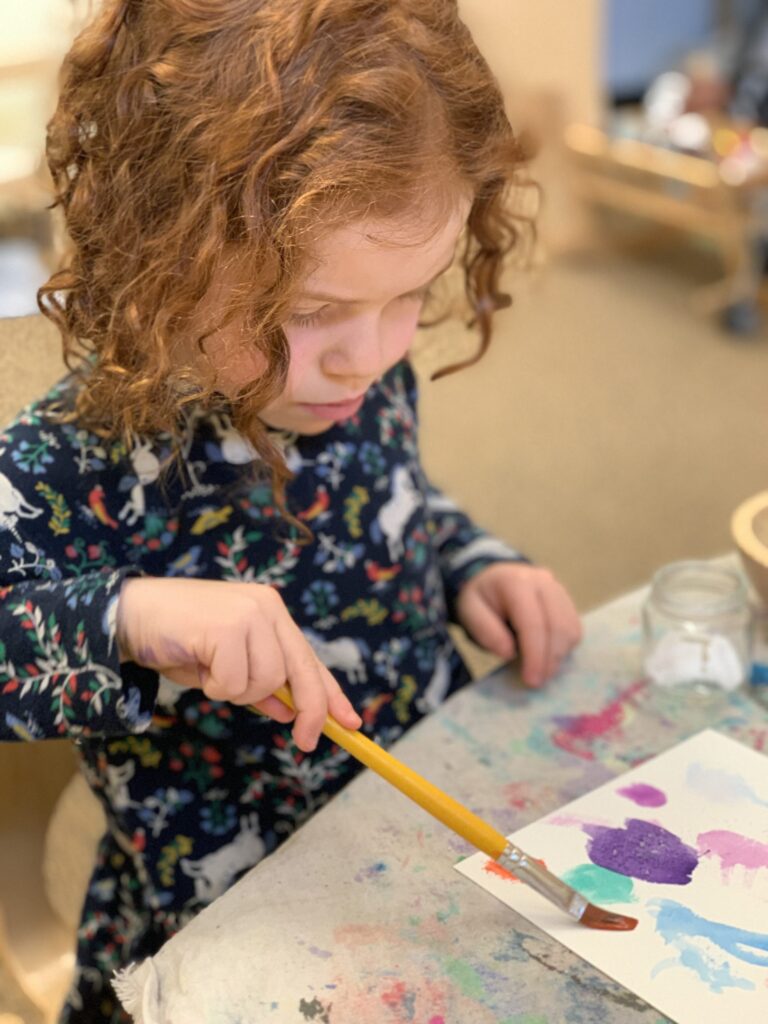
Picture a crowded display of children’s artwork with a refrigerator door as the exhibit space. Ever wondered why those exuberant creations earn such fanfare, regardless of whether they stray outside the lines? Now picture a child putting brush to paper, and let the artist in your imagination be a four-year-old girl. What is she learning to say about the world through her paintbrush? And how might her teacher’s or parent’s guidance help cultivate her creativity?

In the Reggio Emilia philosophy of education, children arrive in their classrooms brimming with latent potential and curiosity. Teachers are viewed as guides accompanying them on voyages of exploration, tracking their course and growth along the way, and inviting them to pursue multiple routes of making meaning out of their experiences. A foundational phrase in this school of thought, the “hundred languages of children” refers to the many ways young learners communicate that extend far beyond verbal expression.

One of those means of expression is art. But here lies an important distinction. Rather than placing emphasis on the finished product, importance is granted to the energetic and often messy process of creating something unique. Placing a focus on the process of making art can encourage children to take the lead and pursue original ideas, rather than aspiring to make something that looks just like the model. Among other things, incorporating art can help children explore their feelings, experience new perspectives, and learn to take a closer look.

Another welcome aspect of this approach to education is that the teacher does not need to be an expert in the subject being taught. The requirement is an openness to learning alongside children. So any qualms about leading students through art activities if making art is far removed from your daily routine, while understandable, are not grounds for dismissing the idea. Consider the end goals: increased literacy, social-emotional learning, and reflection. Museum-worthy pieces do not make the list. Willingness to try something new and supporting students to fully engage in the process are the only prerequisites here.

Finally, there is the bedrock assertion that learning and play are actually fundamental partners. Spend five minutes with a young child and you’ll quickly realize they intuitively know how to play. This universal attribute of childhood helps children practice skills across all developmental domains. Making art can be a vibrant form of play when children are granted agency in the process.
Upcoming Workshop
So are you ready to try out a new “language?” Join us on the evening of February 22nd for “The Languages of Materials: Watercolor” and experience hands-on learning in a virtual setting. With support from an artist and master teacher from the University of Wyoming Art Museum, learn how the medium of watercolor can serve as a means of exploration and communication for learners of all ages. Reserve your spot before February 5th to allow us time to send you a great packet of materials to use during the workshop.
Register for “The Languages of Materials: Watercolor”
Learn More
In the meantime, learn more about how Teton Science Schools integrates Reggio Emilia principles in early childhood education or how to make your own watercolors!
- Making Watercolors with Caitlin
- The Language of Art and Materials in Reggio Emilia Classrooms
- Building a Reggio Emilia Classroom: A Teacher’s Perspective
- A previously recorded workshop exploring place-based education through the lens of nature-based and Reggio Emilia practices


